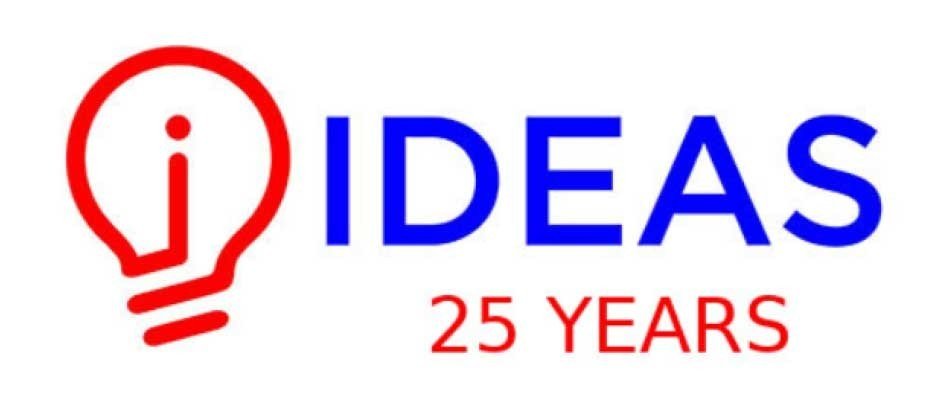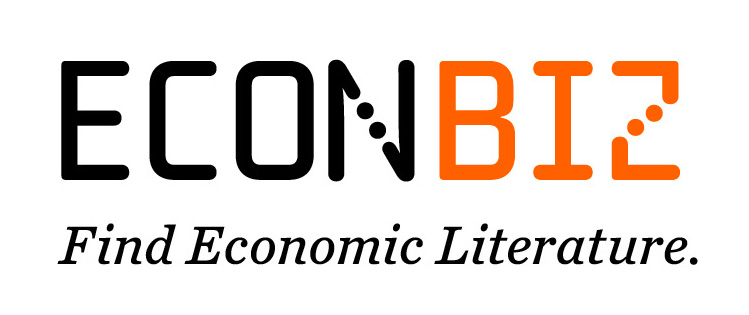| ISSN | 2615-9813 |
| ISSN (số cũ) | 1859-3682 |
Số 229 | Tháng 4/2025
Tác động của phong cách lãnh đạo chuyển đổi đến hành vi đổi mới sáng tạo trong ngành ngân hàng Việt Nam thời kỳ chuyển đổi số
Trần Thiên Kỷ
Tóm tắt:
Nghiên cứu này đã áp dụng mô hình S-O-R (Stimulus-Organism-Response) để kiểm tra ảnh hưởng của phong cách lãnh đạo chuyển đổi đến hành vi đổi mới sáng tạo của nhân viên ngân hàng trong bối cảnh chuyển đổi số tại Việt Nam. Mục tiêu của nghiên cứu này nhằm xây dựng cũng như kiểm định mối quan hệ giữa phong cách lãnh đạo chuyển đổi (LDCD), động lực nội tại (ĐLNT), nhận thức văn hóa tổ chức (VHDN) và hành vi đổi mới sáng tạo (DMST). Nghiên cứu sử dụng phương pháp định lượng với bảng câu hỏi khảo sát trực tuyến, thu thập dữ liệu từ 211 nhà quản lý tại các ngân hàng thương mại Việt Nam. Dữ liệu được phân tích bằng mô hình phương trình cấu trúc bình phương nhỏ nhất từng phần (PLS-SEM). Kết quả nghiên cứu xác nhận rằng LDCD có ảnh hưởng cùng chiều đến DMST, cả trực tiếp lẫn gián tiếp thông qua ĐLNT và VHDN. Nghiên cứu đã chứng minh tầm quan trọng của LDCD, ĐLNT và văn hóa tổ chức ở việc thúc đẩy DMST của nhân viên ngân hàng trong bối cảnh chuyển đổi số.
Tài liệu tham khảo:
- Afriyie, S., Du, J., & Ibn Musah, A.-A. (2019). Innovation and marketing performance of SME in an emerging economy: the moderating effect of transformational leadership. Journal of Global Entrepreneurship Research, 9(1), 40. Doi: https://doi.org/10.1186/s40497-019-0165-3.
- Aggarwal, K. (2022). The impact of corporate attributes on voluntary HR disclosure practices: a study of Indian corporate sector. Asian Journal of Economics and Banking, 7(3), 397-423. Doi: https://doi.org/10.1108/ajeb-05-2022-0048.
- Agyapong, A., Klyton, A. V., Aidoo, S. O., & Osabutey, E. (2024). Green Synergy: Unleashing Creativity, Innovation, Dynamic Capability, and Performance of Small and Medium Firms. International Journal of Innovation Management, 28(07n08), 2450030. Doi: https://doi.org/10.1142/s1363919624500300.
- Al Busaidi, I. S. A. (2020). Leadership styles, organisational politics and employees’ performance: the perspectives of leaders and employees from the oil and gas industry in Oman University of Salford]. Greater Manchester, England.
- Alavi, M., & Leidner, D. E. (2001). Review: Knowledge Management and Knowledge Management Systems: Conceptual Foundations and Research Issues. MIS Quarterly, 25(1), 107-136. Doi: https://doi.org/10.2307/3250961.
- Aldhaheri, S. M., & Ahmad, S. Z. (2024). The influence of transformational leadership on organizational performance and knowledge management capability. International Journal of Productivity and Performance Management, 73(9), 2830-2857. Doi: https://doi.org/10.1108/ijppm-10-2022-0532.
- Amabile, T. M., Amabile, T. M., Collins, M. A., Conti, R., Phillips, E., Picariello, M., Ruscio, J., & Whitney, D. (2018). Creativity in Context. Taylor and Francis,London. Doi: https://doi.org/10.4324/9780429501234.
- Amabile, T. M., Hill, K. G., Hennessey, B. A., & Tighe, E. M. (1994). The Work Preference Inventory: assessing intrinsic and extrinsic motivational orientations. J Pers Soc Psychol, 66(5), 950-967. Doi: https://doi.org/10.1037//0022-3514.66.5.950.
- Antonakis, J., & House, R. J. (2014). Instrumental leadership: Measurement and extension of transformational–transactional leadership theory. The leadership quarterly, 25(4), 746-771. Doi: https://doi.org/10.1016/j.leaqua.2014.04.005.
- Awan, F. H., Dunnan, L., Jamil, K., & Gul, R. F. (2023). Stimulating environmental performance via green human resource management, green transformational leadership, and green innovation: a mediation-moderation model. Environ Sci Pollut Res Int, 30(2), 2958-2976. Doi: https://doi.org/10.1007/s11356-022-22424-y.
- Azeem, M., Ahmed, M., Haider, S., & Sajjad, M. (2021). Expanding competitive advantage through organizational culture, knowledge sharing and organizational innovation. Technology in Society, 66, 101635. Doi: https://doi.org/10.1016/j.techsoc.2021.101635.
- Bass, B. M., & Riggio, R. E. (2012). Transformational leadership. Taylor and Francis,Hoboken.
- Bharadwaj, S. G., Varadarajan, P. R., & Fahy, J. (1993). Sustainable Competitive Advantage in Service Industries: A Conceptual Model and Research Propositions. Journal of marketing, 57(4), 83-99. Doi: https://doi.org/10.1177/002224299305700407.
- Bos-Nehles, A. C., & Veenendaal, A. A. R. (2017). Perceptions of HR practices and innovative work behavior: the moderating effect of an innovative climate. The International Journal of Human Resource Management, 30(18), 2661-2683. Doi: https://doi.org/10.1080/09585192.2017.1380680.
- Bui, M. L. (2021). A journey of digital transformation of small and medium-sized enterprises in Vietnam: Insights from multiple cases. The Journal of Asian Finance, Economics and Business, 8(10), 77-85. Doi: https://doi.org/10.13106/jafeb.2021.vol8.no10.0077.
- Bùi Thị Thanh. (2014). Các yếu tố ảnh hưởng đến hành vi chia sẻ tri thức với đồng nghiệp của giảng viên trong các trường đại học. Tạp chí Kinh tế và Phát triển, 199, 71-79.
- Chin, W. W., & Newsted, P. R. (1999). Structural equation modeling analysis with small samples using partial least squares. Statistical strategies for small sample research, 1(1), 307-341.
- Cohen, J. (2013). Statistical Power Analysis for the Behavioral Sciences. Taylor and Francis,Hoboken. Doi: https://doi.org/10.4324/9780203771587.
- Cui, R., Wang, J., & Zhou, C. (2023). Exploring the linkages of green transformational leadership, organizational green learning, and radical green innovation. Business Strategy and the Environment, 32(1), 185-199. Doi: https://doi.org/10.1002/bse.3124.
- De Jong, J., & Den Hartog, D. (2010). Measuring Innovative Work Behaviour. Creativity and innovation management, 19(1), 23-36. Doi: https://doi.org/10.1111/j.1467-8691.2010.00547.x.
- Gold, A. H., Malhotra, A., & Segars, A. H. (2015). Knowledge Management: An Organizational Capabilities Perspective. Journal of Management Information Systems, 18(1), 185-214. Doi: https://doi.org/10.1080/07421222.2001.11045669.
- Hair, J. F., Black, W. C., Babin, B. J., & Anderson, R. E. (2019). Multivariate data analysis (Vol. 8). Cengage Learning, Hampshire, United Kingdom.
- Hair, J. F., Sarstedt, M., Ringle, C. M., & Gudergan, S. P. (2023). Advanced Issues in Partial Least Squares Structural Equation Modeling. Sage Publications, Thousand Oaks. Doi: https://doi.org/10.1007/978-3-319-05542-8_15-1.
- Huỳnh Thị Thu Sương, & Nguyễn Văn Danh. (2022). Ảnh hưởng của văn hóa doanh nghiệp đến duy trì nguồn nhân lực tại công ty cổ phần quốc tế Phong Phú. Tạp chí Nghiên cứu Tài chính - Marketing, 104-114. Doi: https://doi.org/10.52932/jfm.vi66.227.
- Johnston, R. E., & Bate, J. D. (2013). The power of strategy innovation: a new way of linking creativity and strategic planning to discover great business opportunities. American Management Association, New York.
- Joo, B.-K., & Lim, T. (2009). The Effects of Organizational Learning Culture, Perceived Job Complexity, and Proactive Personality on Organizational Commitment and Intrinsic Motivation. Journal of Leadership & Organizational Studies, 16(1), 48-60. Doi: https://doi.org/10.1177/1548051809334195.
- Khoa, B. T., & Huynh, T. T. (2024). Knowledge-intensive teamwork development through social media adoption after the COVID-19 pandemic in higher education institutions. Heliyon, 10(4), e26210. Doi: https://doi.org/10.1016/j.heliyon.2024.e26210.
- Kotter, J. P. (2012). Leading change. Harvard Business Review Press, Boston, Mass.
- Le, P. B., & Do, Y. H. (2023). Stimulating innovation performance through knowledge-oriented leadership and knowledge sharing: the moderating role of market turbulence. International Journal of Innovation Science, 16(3), 527-549. Doi: https://doi.org/10.1108/ijis-08-2022-0166.
- Mehrabian, A., & Russell, J. A. (1974). An approach to environmental psychology. M.I.T. Press, Cambridge, Mass., London.
- Minh-Duc, L., & Huu-Lam, N. (2019). Transformational leadership, customer citizenship behavior, employee intrinsic motivation, and employee creativity. Journal of Asian Business and Economic Studies, 26(2), 286-300. Doi: https://doi.org/10.1108/jabes-10-2018-0070.
- Murrar, A., Asfour, B., & Paz, V. (2024). Banking sector and economic growth in the digital transformation era: insights from maximum likelihood and Bayesian structural equation modeling. Asian Journal of Economics and Banking, 8(3), 335-353. Doi: https://doi.org/10.1108/ajeb-12-2023-0122.
- Nguyen, M., & Sharma, P. (2024). Interactive impact of transformational leadership and organizational innovation on online knowledge sharing: a knowledge management perspective. Journal of knowledge management, 28(4), 1164-1182. Doi: https://doi.org/10.1108/jkm-09-2022-0758.
- Nguyễn Quỳnh Trang. (2022). Pháp luật về bảo hộ dữ liệu cá nhân trong bối cảnh phát triển trí tuệ nhân tạo và các công nghệ số mới nổi khác. Tạp chí Pháp luật và Thực tiễn, 50, 137-137.
- Nguyễn Thị Đức Nguyên, & Lê Phước Luông. (2017). Các yếu tố tính cách ảnh hưởng đến năng lực sáng tạo của nhân viên tại các doanh nghiệp ở thành phố Hồ Chí Minh. Tạp chí Khoa Học Đại học Mở Thành Phố Hồ Chí Minh - Kinh Tế và Quản Trị Kinh Doanh, 12(2), 144-161.
- Nunnally, J. C., & Bernstein, I. (1994). The assessment of reliability. Psychometric theory, 3(1), 248-292.
- Ogbeibu, S., Pereira, V., Burgess, J., Gaskin, J., Emelifeonwu, J., Tarba, S. Y., & Arslan, A. (2021). Responsible innovation in organisations – unpacking the effects of leader trustworthiness and organizational culture on employee creativity. Asia Pacific Journal of Management, 41(3), 947-977. Doi: https://doi.org/10.1007/s10490-021-09784-8.
- Parviainen, P., Tihinen, M., Kääriäinen, J., & Teppola, S. (2022). Tackling the digitalization challenge: how to benefit from digitalization in practice. International journal of information systems and project management, 5(1), 63-77. Doi: https://doi.org/10.12821/ijispm050104.
- Phạm Thị Bích Ngọc, & Trịnh Xuân Thái. (2023). Ảnh hưởng của lãnh đạo phụng sự tới hành vi đổi mới của nhân viên trong các công ty công nghệ thông tin ở Việt Nam: Vai trò trung gian của động lực nội tại. Tạp chí Kinh tế và Phát triển(315), 52-61. Doi: https://doi.org/10.33301/jed.Vi.1177.
- Ryan, R. M., & Deci, E. L. (2000a). Intrinsic and Extrinsic Motivations: Classic Definitions and New Directions. Contemporary Educational Psychology, 25(1), 54-67. Doi: https://doi.org/10.1006/ceps.1999.1020.
- Ryan, R. M., & Deci, E. L. (2000b). Self-determination theory and the facilitation of intrinsic motivation, social development, and well-being. American Psychologist, 55(1), 68-78. Doi: https://doi.org/10.1037//0003-066x.55.1.68.
- Schein, E. H. (1996). Three cultures of management: The key to organizational learning. MIT Sloan Management Review, 38(1), 9-20.
- Scott, S. G., & Bruce, R. A. (1994). Determinants of Innovative Behavior: A Path Model of Individual Innovation in the Workplace. Academy of management journal, 37(3), 580-607. Doi: https://doi.org/10.2307/256701.
- Stuhlfaut, M. W. (2010). Evaluating the Work Preference Inventory and its Measurement of Motivation in Creative Advertising Professionals. Journal of Current Issues & Research in Advertising, 32(1), 81-93. Doi: https://doi.org/10.1080/10641734.2010.10505277.
- Sudibjo, N., & Prameswari, R. K. (2021). The effects of knowledge sharing and person-organization fit on the relationship between transformational leadership on innovative work behavior. Heliyon, 7(6), e07334. Doi: https://doi.org/10.1016/j.heliyon.2021.e07334.
- Sveiby, K. E., & Simons, R. (2002). Collaborative climate and effectiveness of knowledge work – an empirical study. Journal of knowledge management, 6(5), 420-433. Doi: https://doi.org/10.1108/13673270210450388.
- Tierney, P., Farmer, S. M., & Graen, G. B. (2006). An Examination of Leadership and Employee Creativity: The Relevance of Traits and Relationships. Personnel psychology, 52(3), 591-620. Doi: https://doi.org/10.1111/j.1744-6570.1999.tb00173.x.
- Tsai, W. (2001). Knowledge Transfer in Intraorganizational Networks: Effects of Network Position and Absorptive Capacity on Business Unit Innovation and Performance. Academy of management journal, 44(5), 996-1004. Doi: https://doi.org/10.2307/3069443.
- Tuyen, B. Q., Phuong Anh, D. V., Mai, N. P., & Long, T. Q. (2023). Does corporate engagement in social responsibility affect firm innovation? The mediating role of digital transformation. International Review of Economics & Finance, 84, 292-303. Doi: https://doi.org/10.1016/j.iref.2022.11.005.
- Venketsamy, A., & Lew, C. (2022). Intrinsic and extrinsic reward synergies for innovative work behavior among South African knowledge workers. Personnel Review, 53(1), 1-17. Doi: https://doi.org/10.1108/pr-02-2021-0108.
- Võ Thị Ngọc Thúy, Mai Thu Phương, & Hoàng Đoàn Phương Thảo. (2017). Thuyết lây lan: từ văn hóa tổ chức và lãnh đạo đến hành vi của nhân viên với tổ chức và thái độ với khách hàng. Tạp chí Kinh tế & Phát triển, 239, 29-36.
- Zeb, A., Akbar, F., Hussain, K., Safi, A., Rabnawaz, M., & Zeb, F. (2021). The competing value framework model of organizational culture, innovation and performance. Business Process Management Journal, 27(2), 658-683. Doi: https://doi.org/10.1108/bpmj-11-2019-0464.
The Impact of Transformational Leadership on Innovative Behavior: An S-O-R Model Analysis in Vietnam's Banking Sector During Digital Transformation
Abstract:
This study applied the S-O-R (Stimulus-Organism-Response) model to examine the influence of transformational leadership on innovative behavior of banking employees in the context of digital transformation in Vietnam. The research aimed to develop and test the relationships between transformational leadership, intrinsic motivation, organizational culture perception, and innovative behavior. The study employed a quantitative method with an online survey questionnaire, collecting data from 211 managers at Vietnamese commercial banks. Data were analyzed using the PLS-SEM structural equation modeling approach. The research findings confirmed that transformational leadership positively influences innovative behavior, both directly and indirectly through intrinsic motivation and organizational culture perception. The study demonstrated the importance of transformational leadership, intrinsic motivation, and organizational culture in fostering innovative behavior of banking employees during digital transformation.







